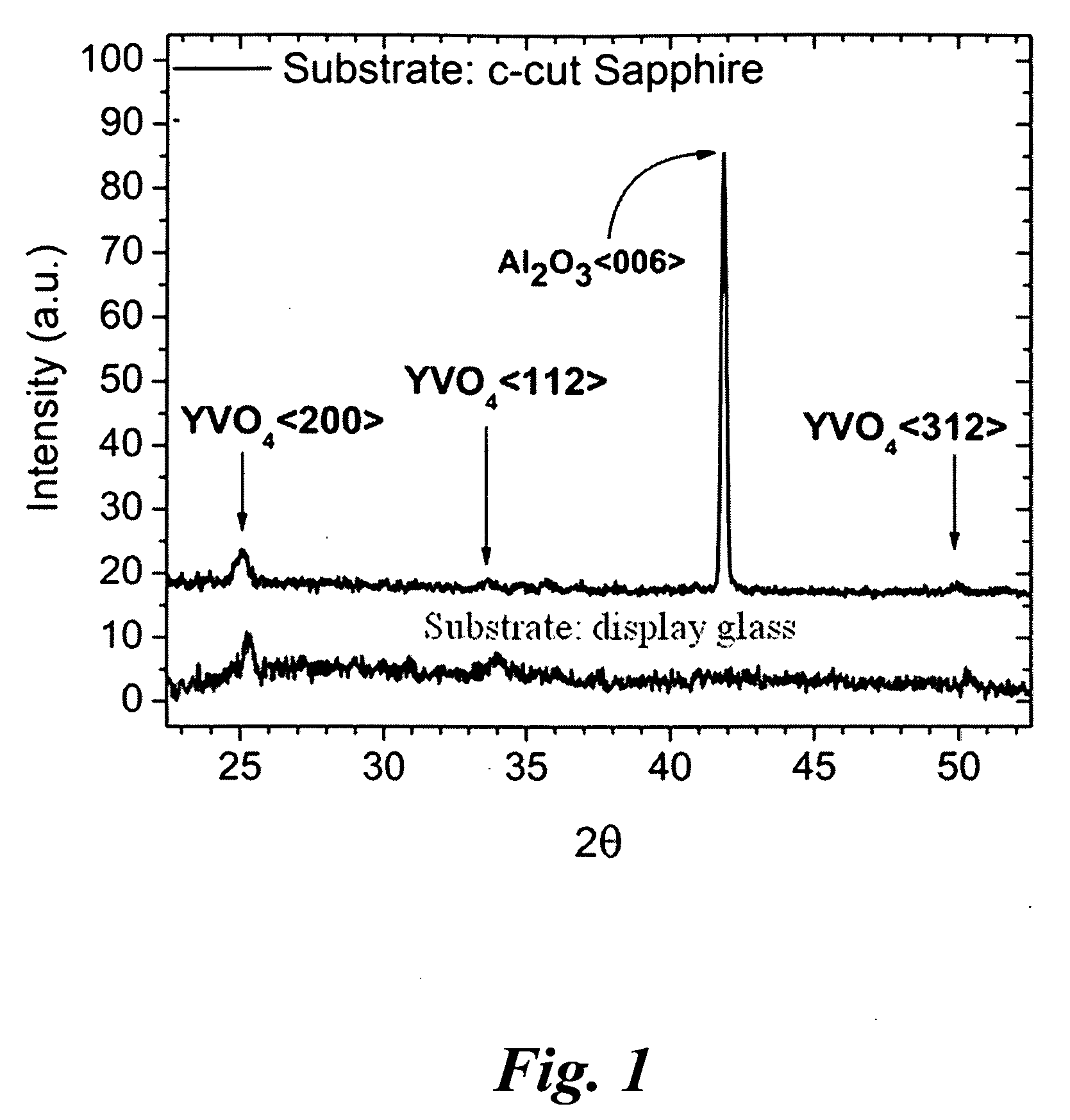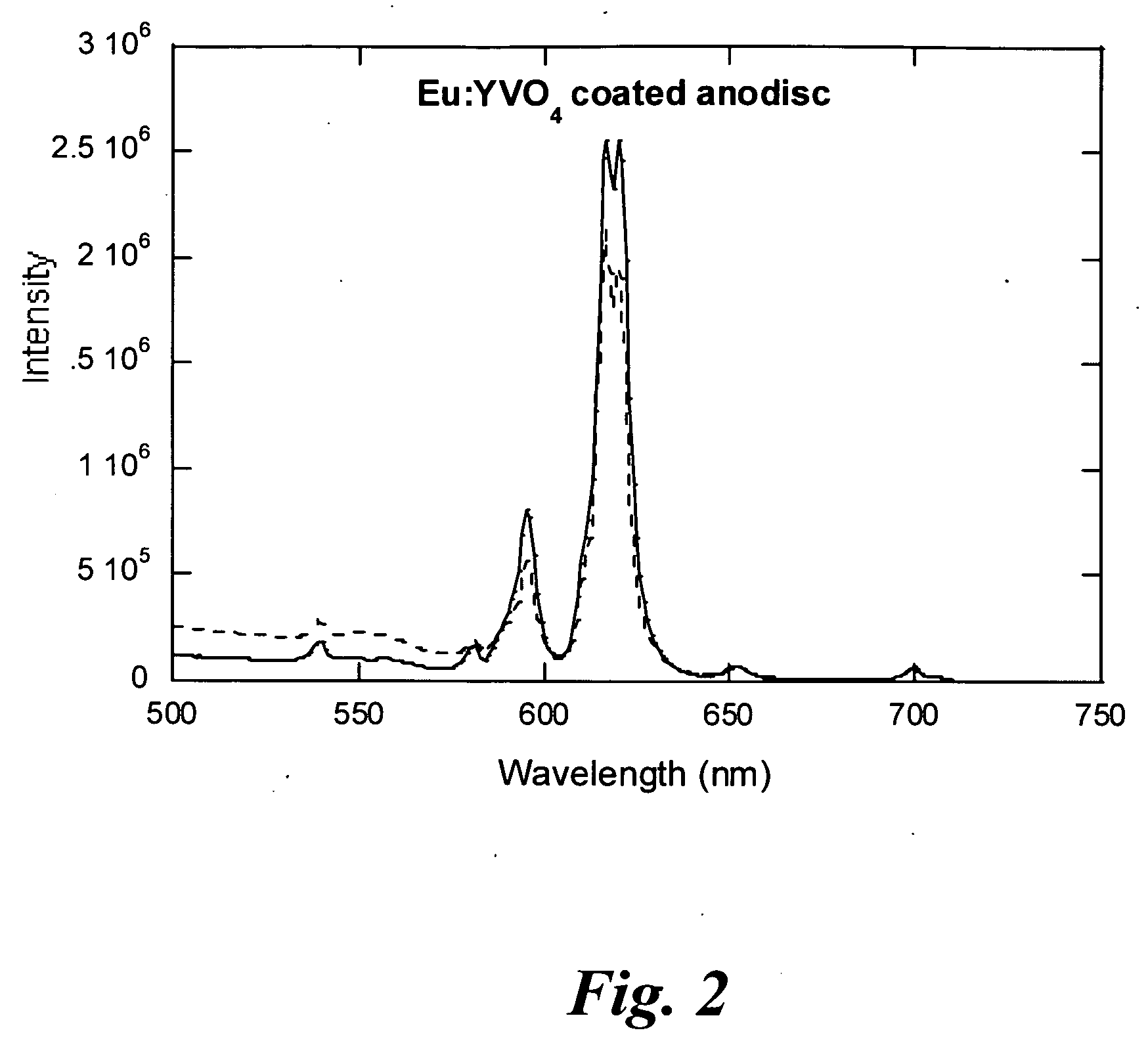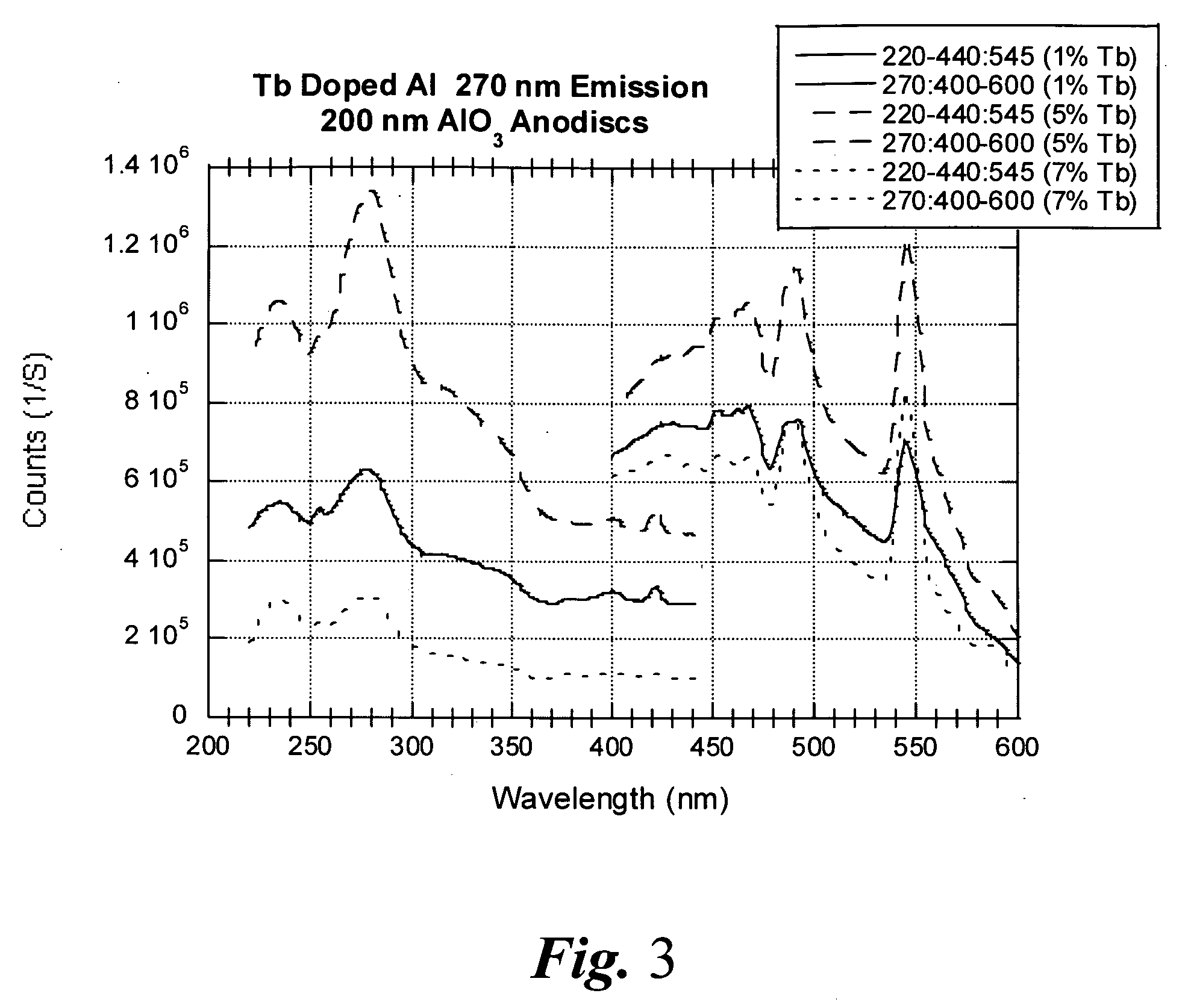Porous light-emitting compositions
a light-emitting composition and porous technology, applied in the field of light-emitting devices, can solve the problems of reducing quantum yield, reducing extraction efficiency, and reducing efficiency, and achieve the effect of improving light outpu
- Summary
- Abstract
- Description
- Claims
- Application Information
AI Technical Summary
Benefits of technology
Problems solved by technology
Method used
Image
Examples
example a
Solutions
[0049]A yttrium solution was prepared by mixing 1.3 g yttrium nitrate hexahydrate (99.9%, ALFA AESAR) with 1.0 g HEDTA (ALDRICH, 99.995% pure) and 1.0 g BASF polyethyleneimine polymer. The resulting solution was filtered through a 0.45 micron filter, diluted to 200 mL with nano pure water, and purified by Amicon filtration with a 3,000 MW cut-off filter. The final concentrated solution was 133 mM yttrium, determined by ICP / AES.
[0050]A europium solution was prepared by mixing 1.0 g of europium nitrate hexahydrate (99.9%, ACROS) with 1.0 g HEDTA (ALDRICH, 99.995% pure) and 1.0 g BASF polyethyleneimine polymer. The resulting solution was filtered through a 0.45 micron filter, diluted to 200 mL, and purified by Amicon filtration with a 3,000 MW cut-off filter. The final concentrated solution was 136 mM europium.
[0051]A vanadium solution was prepared by mixing 1.0 g vanadyl sulfate (ACROS) with 1.0 g HEDTA (ALDRICH, 99.995% pure) and 1.0 g BASF polyethyleneimine polymer. The res...
example b
[0058]P1-Photonic Crystals with one coat of YV / 5% Eu were prepared as follows. SiO2 crystals were coated with YV / 5% Eu using the PAD method of coating. Coating solutions were made by mixing calculated volumes of each solution to obtain a 1:1 mol ratio of Y to V. A calculated volume of Eu solution was added to the Y / V solution to obtain a 5% mol ratio of Eu. 283 mg of the solution was then dropped onto 32 mg of P1 photonic crystals in a 20-mL scintillation vial. The vial was rotated to ensure total coverage of the crystals by the coating solution. The coated crystals were then rotovapped under negative pressure in order to cause the solution to penetrate the cavities within the photonic crystals and remove excess water. When the crystals appeared dry, the crystals were transferred to a ceramic crucible. The crystals were then annealed in air with the following heating program: The temperature was ramped to 120° C. at 10° / min and held for 1 hour. The temperature was ramped to 450° C. ...
example c
[0059]P1-Photonic Crystals with two coats of YV / 5% Eu were prepared as follows. SiO2 crystals were coated with YV / 5% Eu using the PAD method of coating. Coating solutions were made by mixing calculated volumes of each solution to obtain a 1:1 mol ratio of Y to V. A calculated volume of Eu solution was added to the Y / V solution to obtain a 5% mol ratio of Eu. 194 mg of the solution was then dropped onto 32 mg of P1 photonic crystals in a 20-mL scintillation vial. The vial was rotated to ensure total coverage of the crystals by the coating solution. The coated crystals were then rotovapped under negative pressure in order to cause the solution to penetrate the cavities within the photonic crystals and remove excess water. When the crystals appeared dry, the crystals were transferred to a ceramic crucible. The crystals were then annealed in air with the following heating program: The temperature was ramped to 120° C. at 10° / min and held for 1 hour. The temperature was ramped to 450° C....
PUM
| Property | Measurement | Unit |
|---|---|---|
| pore sizes | aaaaa | aaaaa |
| pore sizes | aaaaa | aaaaa |
| extraction efficiencies | aaaaa | aaaaa |
Abstract
Description
Claims
Application Information
 Login to View More
Login to View More - R&D
- Intellectual Property
- Life Sciences
- Materials
- Tech Scout
- Unparalleled Data Quality
- Higher Quality Content
- 60% Fewer Hallucinations
Browse by: Latest US Patents, China's latest patents, Technical Efficacy Thesaurus, Application Domain, Technology Topic, Popular Technical Reports.
© 2025 PatSnap. All rights reserved.Legal|Privacy policy|Modern Slavery Act Transparency Statement|Sitemap|About US| Contact US: help@patsnap.com



